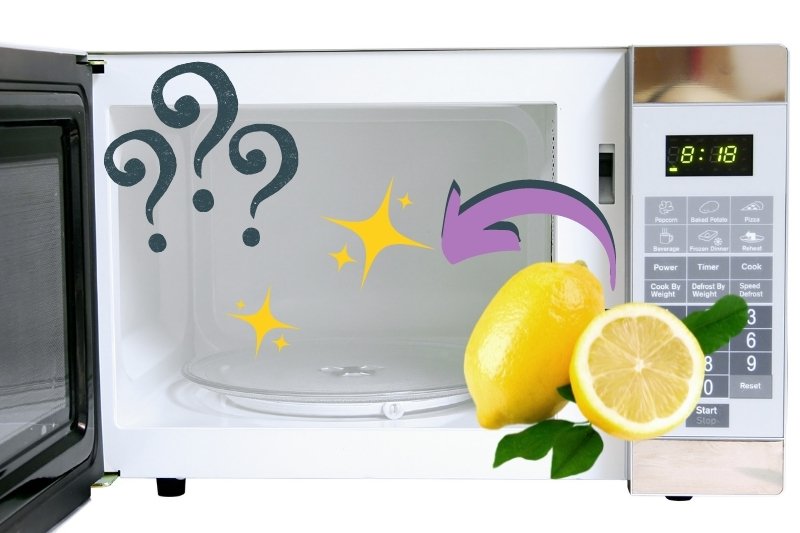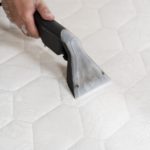Microwaves save us from standing near a hot stove for hours on end, they deliver us great meals (popcorn of course!), and they even heat up mum’s mouth-watering cottage pie from the night before.
They’re a dream, right! Well, that is until they start to smell and look a little grotty around the edges…
But even the grubbiest of microwaves can be transformed, and all you really need is a little lemon to do this in most cases. Keep on reading to find out how to clean a microwave with a lemon.
How to Clean a Microwave with Lemon
Cleaning your microwave with a lemon is a sure way of making it smell very citrusy and make it glow once again! Follow the steps below to clean your microwave right now with just a single lemon.
What you need:
- Big microwave safe bowl
- One/Two cups of water
- Lemon
- Gloves
- Cloth
- Access to additional water
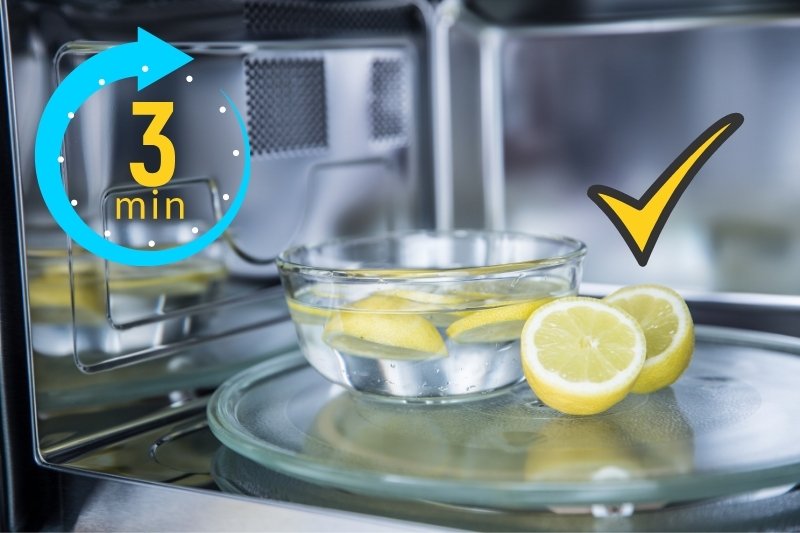
Steps to take:
- Make sure that your microwave is clear. Take out any food that you’ve been storing in there!
- Fill a large microwave safe bowl with one to two cups of water. You need a bowl that’ll allow bubbles to rise up inside when the water is boiling, but one that’ll stop any water from tipping over the edge.
- Grab a lemon and chop it in half.
- Squeeze the juice from both halves of the lemon into the water.
- Then drop the lemon halves into the bowl of water too.
- Pop the bowl that has been filled up into the microwave.
- Run the microwave for three minutes.
- When the microwave pings don’t open the door. Wait another five minutes. During this time the steam will have time to get to work softening up the toughened grime.
- Cut the power to the microwave.
- Open the door and carefully remove the bowl of hot lemon water. Use gloves to do this.
- Pop the bowl to one side but don’t tip the water away.
- Remove the plate and ring. You can clean these with the leftover lemon water when you’re done, or you can rinse them down with washing up liquid and water.
- With a clean cloth start wiping the microwave down. Start from the roof, work down to the sides, onto the door and finish off with the floor.
- You will need to rinse the cloth of dirt as you go. Just use the tap in the sink to do this.
- If you spot any dirt that doesn’t want to move, just dip your cleaning cloth into the lemon water and start scrubbing at the dirty patch.
- Continue to do this until your microwave is clean.
- You may notice that there are a few spots in your microwave that you just can’t get clean, in this case, I suggest you try some of the alternative cleaning methods noted in the section below.
- Once you’ve completed your interior cleaning you can replace the plate and ring, and your microwave will be good to go again.
Additional cleaning
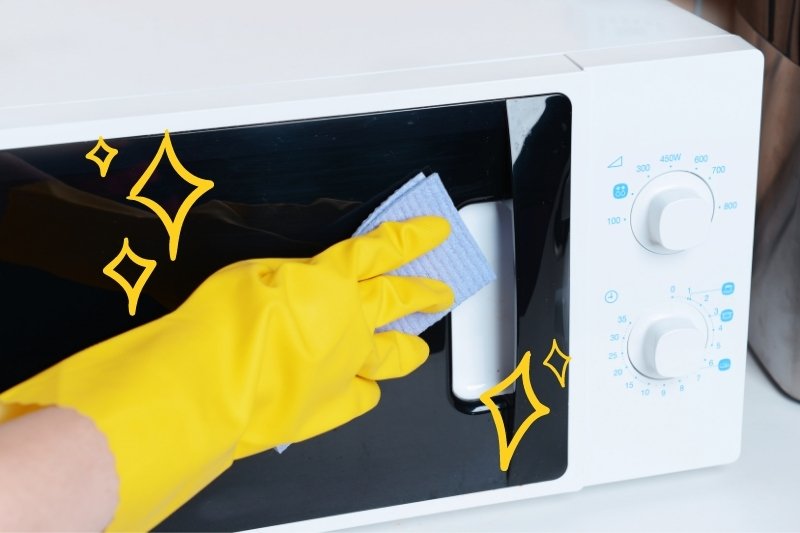
While a large proportion of your cleaning will be done inside of the microwave, you must not neglect the outside of the appliance too.
Of course, the outside of a microwave is generally quite clean because food isn’t likely to spill in this area. Nonetheless, it is always worth wiping the exterior down, even if it’s only with a damp cloth.
In addition to this, it’s worth making sure that the vents are kept clean and clear at all times. You can run a cloth over this area to wipe away any dirt. And if there is a lot of fluff/dust built up inside you can use a toothpick to pull this debris out.
Can Lemon Juice in a Bottle Be Used Instead of a Real Lemon?
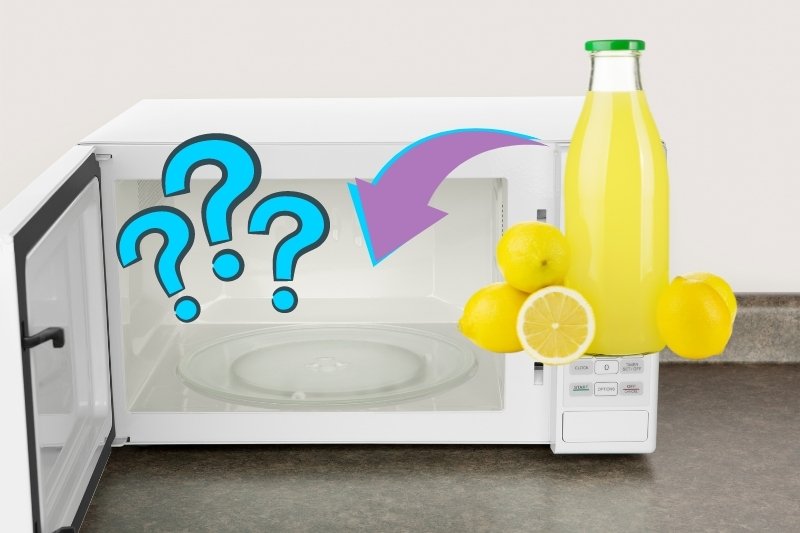
Yes, lemon juice that comes in a bottle can be used instead of a real lemon during the cleaning process above.
Alternative Cleaning Methods to Clean a Microwave
Although cleaning a microwave with a lemon is undoubtedly one of the easiest ways, it isn’t always possible to do so.
For example, if you don’t actually have lemons in the house the method above would be quite difficult. And also, there are times when dirt is just a little too tough, and it needs an extra little push to get rid of it.
The alternative cleaning methods below can be used alongside the lemon method above, or on their own, and they’ll be able to revitalise your microwave in no time at all.
1. White vinegar
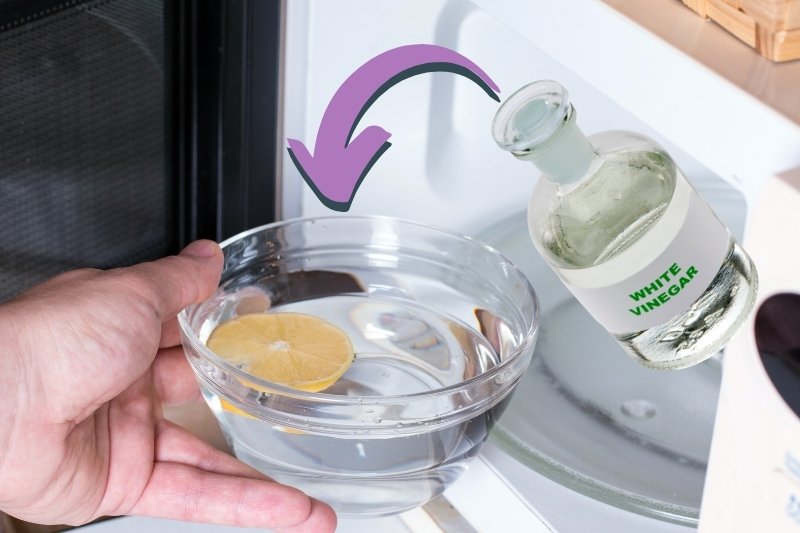
If you’ve completed the lemon-related steps above, but you feel that you need an extra dash of power to remove those pesky food stains, just add white vinegar to your bowl of lemon water.
Add a tablespoon of white vinegar to the already boiled lemon water and place the bowl back in the microwave. Run the microwave for a further two minutes, and when the ping goes off wait a further five minutes before removing the bowl.
When you’ve removed the bowl, you can clean your microwave with a cloth. Wipe down the roof, sides, door and floor of the microwave, but also pay close attention to the more soiled areas.
You can also dip your cleaning cloth into the lemon-vinegar water and scrub at the extra dirty patches, if you like. Just continue to do this until all of the grime has gone.
If you still feel like you need something stronger to clean your microwave follow the advice below for bicarbonate of soda.
Bonus Tip: You can, of course, skip the whole lemon phase and just use white vinegar and water to clean your microwave.
All you need to do is add two cups of water to a microwave safe bowl and add in two tablespoons of white vinegar (adjust the ratio to suit your situation). Then you pop the bowl into the microwave to boil for two minutes. Wait another five minutes before removing the bowl. And finally, you wipe the insides of the microwave down.
2. Bicarbonate of soda

If you’ve completed the steps for the lemon method above, but your microwave is still patchy, just sprinkle some bicarbonate of soda onto the dirty areas and allow it to rest there for a few minutes.
Then soak a cloth in the lemon water in the bowl and scrub at the dirty spots. The bicarbonate of soda will work wonders when it comes to removing toughened grease, and you don’t actually need to use a lot of it either.
Continue to sprinkle the areas that are still dirty with bicarbonate of soda, and wipe the excess product away until your microwave is clean.
Bonus Tip: If you’d rather skip the lemon phase and go straight to the bicarbonate of soda method, you can do this too.
All you need to do is fill half a microwave safe bowl up with water, then add two tablespoons of bicarbonate of soda to the water. Stir slightly, then pop the bowl in the microwave and set the timer for three minutes. Remove the bowl a few minutes after the timer has gone off. Wipe down the roof, sides, door and floor of the microwave.
For tougher areas, just sprinkle some bicarbonate of soda over the soiled areas and scrub them clean with a warm moist cloth.
3. Washing up liquid

If none of the above appeals to you, you can, of course, just use washing up liquid and warm water to clean your microwave.
All you need to do is fill a bowl with warm water and add in washing up liquid. Then dip a cloth in the soapy water and start rubbing down the roof, sides, door, floor and exterior of the microwave.
Just make sure that you remove all the soapy residue before you use your microwave again!
Top Tips to Prevent a Microwave from Getting too Dirty
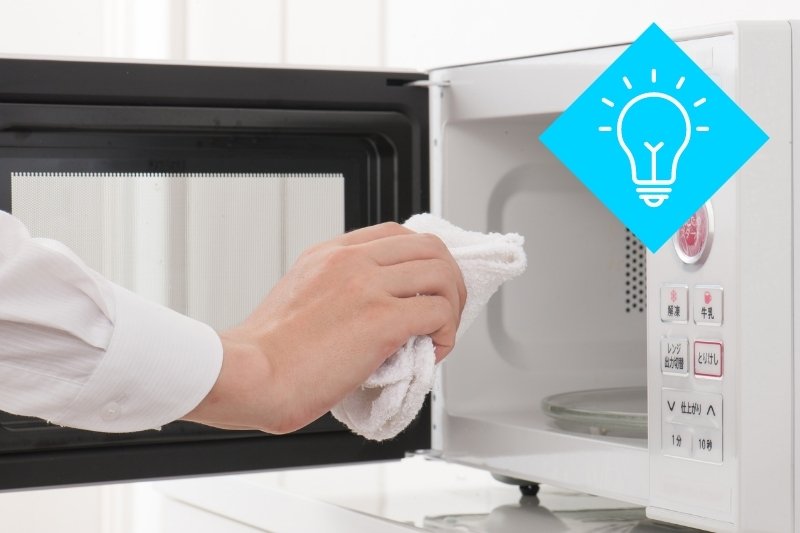
Below you’ll find some helpful tips to keep your microwave in tip-top form:
- If you can see that food has tipped onto the microwave’s plate during a cooking session, you should clear it away immediately.
- If food has bubbled over the sides of a container and has landed on the floor/sides of the microwave, treat and remove this debris straight away
- Leave your microwave door open after you’ve cooked particularly pungent foods in it. This will help to remove some of the smell that has been left behind.
- Make a habit of cleaning your microwave, so that you don’t have to do massive deep cleans when it’s time to clean the machine.
- Make a habit of cleaning the outside of your microwave too! Keep the front, back, sides and vent clear of dirt.
- Use containers that are deemed microwave safe to avoid any mishaps like spillages.
- Use lids to cover your food up as they cook, this can prevent the food from splashing all over the insides of the microwave.
How Often Should You Clean a Microwave?
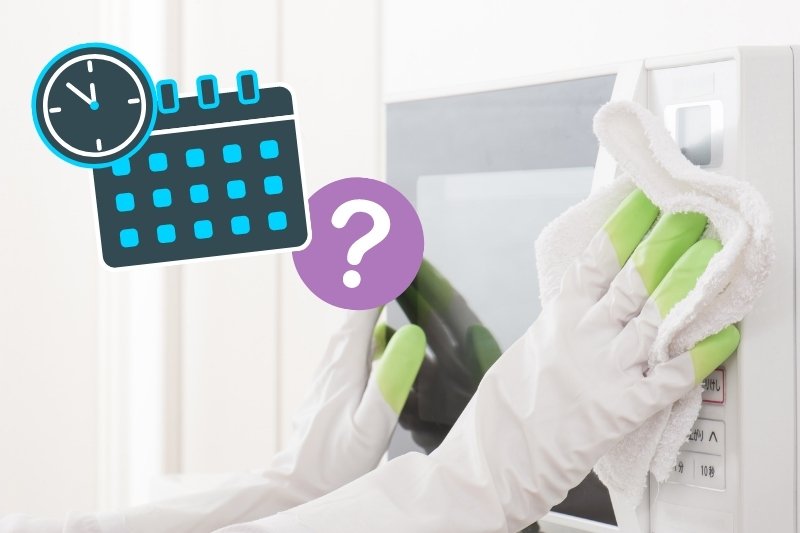
You should aim to clean your microwave at least once every week to once every three weeks. This will prevent strong smells from building up, and small but regular cleans stop massive dirt build ups from occurring.
However, how frequently you use your microwave dictates how often you should clean it. If you use your microwave every day, and multiple times a day too, you need to increase how often you clean it.
In addition to this, if you spot obvious spills, you should aim to clean them up as soon as possible, so that they don’t toughen up and become harder to remove.

Bethan has a passion for exploring, reading, cooking and gardening! When she’s not creating culinary delights for her family, she’s concocting potions to keep her house clean!
